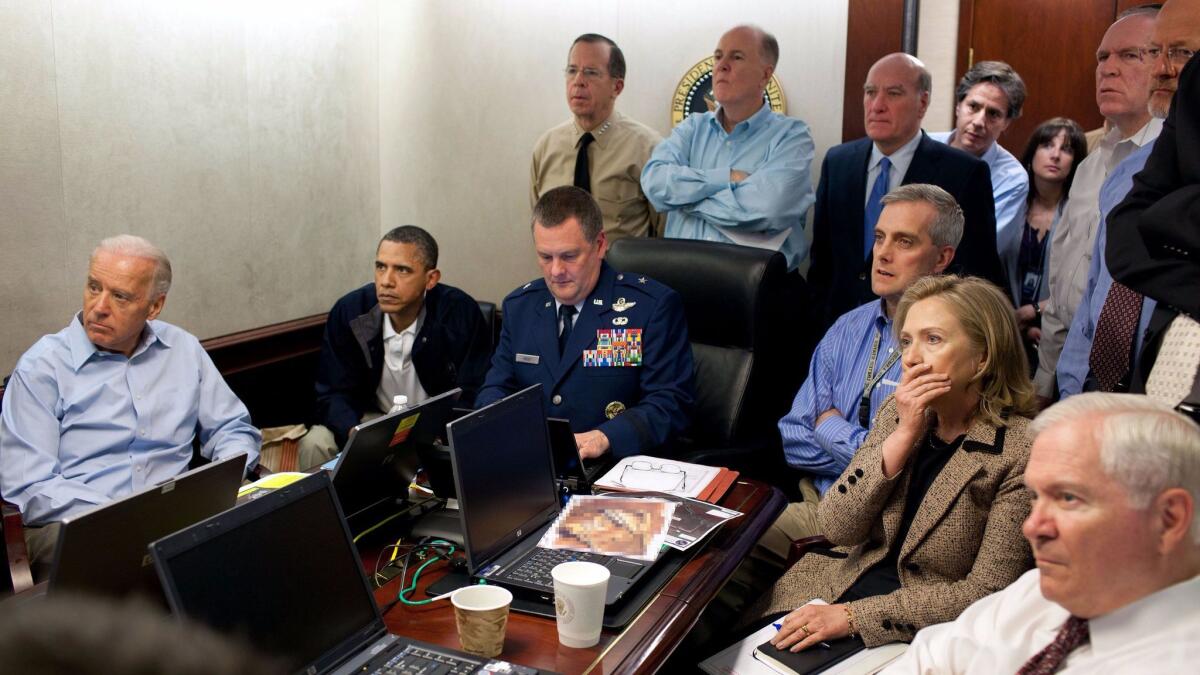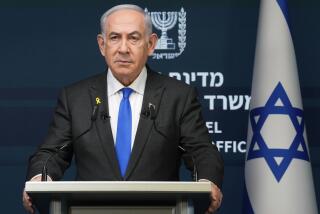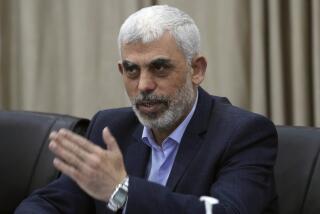Why killing terrorist leaders doesn’t necessarily wipe out their organizations
Amid recent speculation about the fate of Islamic State leader Abu Bakr Baghdadi, U.S. officials were quick to say they had no idea whether Baghdadi was dead or alive.
Defense Secretary James N. Mattis, nevertheless, told reporters the deaths of such extremist leaders inevitably represent substantial blows against the groups.
“To take out leaders of these kind of organizations always has an organizational impact,” Mattis said during a July 14 news conference. “It has an impact. … It always does in war.”
Killing leaders of terrorist groups has been a centerpiece of U.S. counter-terrorism strategy at least since President George W. Bush launched the “war on terror” in 2001.
The number of military strikes against terrorist leaders increased and expanded under President Obama’s administration with the killing of both senior and junior terrorist leaders in places including Pakistan, Yemen and Iraq. Al Qaeda leader Osama bin Laden, for example, was killed by U.S. forces in Pakistan in 2011.
Analysts don’t expect the policy of targeting militant leaders to change under the Trump administration.
But many analysts also say that while removing leaders may hurt militant groups, there are numerous examples of new leadership taking charge and continuing their missions. In some instances, analysts said, killing terrorist leaders fueled even more violence.
“The prevailing wisdom has been for a long time that taking out terrorist leaders helps to destabilize their groups,” said Jenna Jordan, assistant professor of International Affairs at Georgia Tech, who is writing a book on the subject. “But it’s unlikely to diminish a large terrorist group’s activities in the long run.”
Many analysts say that even if Baghdadi were dead, Islamic State has shown an ability over the years to turn to different leaders and maintain a mission of extremism and sectarianism in Iraq and Syria.
Several groups have remained potent enough to recruit members and carry out attacks, experts said.
In Somalia and parts of Kenya, for instance, the Shabab, an Al Qaeda-linked extremist group, carried out attacks killing scores of people in 2016 despite having been hit by government strikes that resulted in a weakened leadership.
On Friday, the U.S. military confirmed that an airstrike killed Ali Mohamed Hussein, a high-level commander from the extremist group blamed for planning attacks in Mogadishu, the capital of Somalia.
Al Qaeda has lost key leaders besides Bin Laden over the years. In 2006, the leader of Al Qaeda’s Iraq branch, Abu Musab Zarqawi, was killed in a targeted U.S. strike. This year, a U.S. drone strike killed the second-ranking Al Qaeda official in Syria, Abu Khayr Masri.

Nevertheless, the group’s presence in the Arabian Peninsula continues to threaten Yemen, the Gulf region and U.S. forces, according to the State Department’s 2016 country report on terrorism. Al Qaeda is a militant group largely based in Pakistan but with affiliated groups in Yemen, Somalia and Egypt. Its goal is to drive Western influence out of the Middle East and enforce a strict interpretation of sharia law.
The State Department report, released July 19, also found that despite losing key senior figures and a significant amount of territory in Syria and Iraq, Islamic State remains one of the most capable terrorist organizations in the world.
Although the U.S. has killed several Al Qaeda leaders throughout the years, the slayings don’t appear to have significantly reduced the militant group’s capabilities long-term, said Bruce Hoffman, director of security studies at Georgetown University and author of the book “Inside Terrorism.”
Hoffman’s research focuses on the effectiveness of U.S. targeted killings of Al Qaeda leaders. His research suggests that while killing Al Qaeda leaders might have temporarily prevented the group from carrying out attacks, it continues to remain a threat.
Some analysts point to two main variables when determining the effectiveness of killing terrorist leaders: how much popular support the leader’s group has from sympathizers or civilians living under its rule, and the group’s bureaucratic organizational structure.
In some cases, analysts say, the death of an Al Qaeda or Islamic State leader could have a martyrdom effect, meaning it could inspire sympathy for the terrorist group and help recruit more members.
Jordan said the more a terrorist group operates like a bureaucracy, the more likely it is to withstand disruption to its leadership and experience a smooth succession.
“Islamic State has standard operational procedures that makes it function like a state,” Jordan said. “If Baghdadi is dead they know who is going to step in, just like a firm has a succession mechanism in place.”
In some cases, scholars say decapitation strikes can increase violence if the slain leader was an inspirational figure or if the targeted killing resulted in civilian deaths.
In the early 2000s, for example, Israeli officials led a targeted killing campaign against Hamas leaders, which resulted in public outcry and retaliatory attacks against Israelis. The killing of Hamas leaders also helped to decentralize the group. While that may disrupt another group from controlling its members, Jordan said it made defeating Hamas more difficult for Israel.
Jordan said religious terrorist groups tend to be the most resilient even after their senior leadership gets killed. She found that the odds of an Islamist terrorist group carrying out attacks the year after a senior leader was killed was more than two times higher than non-Islamist groups.
“Religious terrorist groups are stable because the ideology of these groups are not dependent on a leader for reproduction,” Jordan said. “Osama bin Laden, for example, was successful at broadening Al Qaeda’s appeal because the group’s belief went beyond any leader.”
Brian Jenkins, a counter-terrorism expert and senior advisor to the president of Rand Corp., said targeted killings can be useful in some instances against smaller terrorist groups. Terrorist leaders bring skills and talents central to the group’s ability to function, Jenkins said, which aren’t always easily replaceable.
“Leadership is a precious commodity, and terrorist groups have limited talent unless it’s a gigantic movement,” Jenkins said, “So a group that doesn’t have as charismatic or a skilled leader may not be able to operate at the same level of effectiveness.”
Some experts say removing terrorist leaders has helped governments defeat insurgent organizations or smaller extremist groups. Still, history shows terrorist groups can avoid being fully dismantled by removal of its leaders.
For example, Peru’s Shining Path rebel group, which sought to overthrow the Peruvian government in the 1990s, was significantly weakened when its leader, Abimael Guzman, was captured in 1992 and sent to prison. The Peruvian government and some scholars praised the capture as an example of how taking out terrorist leaders could result in the end of the group, but in recent years Shining Path has made a comeback.
In some ways, Jenkins said, killing terrorist leaders provides governments with a low-risk and easily identifiable metric to demonstrate to the public what it’s doing to battle terrorist groups.
“There’s the need to show the public that something can be done,” Jenkins said. “And it also sends a message to terrorists that they aren’t immune.”
Follow me on Twitter: @melissaetehad
More to Read
Sign up for Essential California
The most important California stories and recommendations in your inbox every morning.
You may occasionally receive promotional content from the Los Angeles Times.











